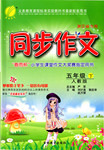题目内容
A severely handicapped teenager who cannot walk, talk or hold a
paintbrush has won a place at Oxford to study fine art. Hero Joy Nightingale, 16, who communicates through hand movements, is to be given assistants to paint and sculpt(雕塑) in place of her .Her mother Pauline Reid “translated” for her daughter during interviews for the place at Magdalen College.
The teenager is the most severely handicapped student ever to be given a place at Oxford. She suffers from a terrible disease caused by brain damage that makes her unable to speak and her body useless.
She is unlikely ever to be able to walk, feed or care for herself but, thanks to the efforts of her mother. She can communicate. When Hero was four, Pauline designed a system of hand gestures that is equal to the alphabet.
By dictating to the her mother , Hero has created an internet magazine, From the window, which contains by George Carey, Melvyn Bragg, Margaret Atwood and Kofi Annan — all of whom are invited to write for her.
A spokesperson for Oxford said, “The university welcomes applications from students with disabilities. In cases where students are profoundly disabled, there may be many issues(问题) that need to be carefully talked about before an individual can take up a place, such as fixing firmly how the student can best be taught and examined.”
Hero, who suffers almost daily epileptic fits and has a hole in her heart, has not attended school since she was six. She has been taught at home by her mother and father, who work at Kent University.
Peter Giles, her art tutor until last year, said she has a gift for art. “She is ferociously gifted. We would sit together and her mother would grab her daughter’s hand and then we would begin work,” he said.
Together, they www..combuilt several modern sculptures from plaster and metal. “The instructions would talk a while to decipher(解释,解密). But finally, they would come, and finally make sense.”
Hero’s classes will be held at the Ruskin School Drawing and Fine Art.
According to the passage, which of the following statement is NOT TRUE?
A. Oxford University has taken in other handicapped students besides Hero.
B. Hero’s mother is the only person who can understand her fairly well.
C. Hero can not create any art works without her fairly well.
D. Only through her hand movement, is Hero able to paint and sculpt.
In the sentence: “But finally, they would come and finally make sense.”, the word “they” refers to _______.
A. the assistants B. the mother and the assistants
C. Hero’s instructions D. the mother’s instructions
Which would be the best title for the passage?
A. Disabled Hero and her Mother
B. Disabled Hero Wins Oxford Place
C. Oxford University Welcome Disabled Students
D. Disabled Students Living in Oxford University
【小题1】D
【小题2】A
【小题3】C
【小题4】B
解析:
【小题1】本题为细节判断题。由第三段的第一句话可以选出正确答案。矛盾之处在于D项意为Hero自己绘画和雕塑,而原文之意为Hero通过自己手的动作别人(助手)为她绘画和雕塑。
【小题2】本题为推理判断题。B项可以由第四段第一句淘汰。由第六段最后一句可以淘汰C项,D项在文中没有涉及到。第六段最后一句中的 the students can be best taught and examined 可得知答案。
【小题3】本题为细节判断题。由倒数第二段中The instructions would take a while to decipher。But finally they would come and finally make sense,可以推测出they是指前文的instructions。
B 本题为主旨判断题。由文章的第一句即主题句可以判断出答案。
【小题4】本题为推理判断题。 A项在文中没有提到。C项是文中的事实。D项与文意相反。B
可由前三个自然段可以推断得出。

 春雨教育同步作文系列答案
春雨教育同步作文系列答案LONDON (Reuters)—New faces given to a Chinese man after a bear tore off part of his face and a FrenchCaribbean man disfigured by a rare tumor show that such transplants can work and are not medical oddities (怪异),researchers said.
The findings give hope to some people with severe facial disfigurement and suggest the transplants could prove longlasting without major problems.Despite the tissue rejection in the first year after their transplants,neither men had psychological problems accepting their new faces and have been able to rejoin society,they reported.
Only three people have received face transplants.The world’s first was carried out on French woman Isabelle Dinoire in November 2005 after she was disfigured in an attack by her dog.In 2007,her doctors reported that she had recovered slowly and steadily,overcoming two periods of rejection.
In 2006,Chinese doctors performed a face transplant on a 30yearold hit by a bear.While there were some complications with tissue rejection following the operation,two years later the man was doing well,his doctors said.“This case suggests that facial transplantation might be an option for restoring a severely disfigured face,and could enable patients to bring themselves back into society,” Shuzhong Guo and colleagues at Xijing Hospital in China wrote.
A French team described their work on a 29yearold man who suffered from Von Recklinghausen disease,an illness that changes the shape of his face.“The man,who was not named,was given a new nose,mouth and chin in a 2007 operation.He began to work 13 months after the transplant has more function in his face and has not rejected the new tissue,” his doctors said.
“Our case confirms that face transplantation is practical and effective for the correction of specific disfigurement,” Dr.Laurent Lantieri and colleagues at the HenriMondor hospital outside Paris wrote.
【小题1】What’s the main idea of this passage?
| A.Face transplants help regain confidence. | B.Face transplants can work. |
| C.Three people have received face transplants. | D.Disfigured people need face transplants. |
| A.removing | B.recovering | C.repairing | D.rejecting |
| A.The patients usually suffered from tissue rejection. |
| B.It was hard for the patients to get along with others. |
| C.It took some time for the patients to recover from the operation. |
| D.The patients wouldn’t accept the facial change. |